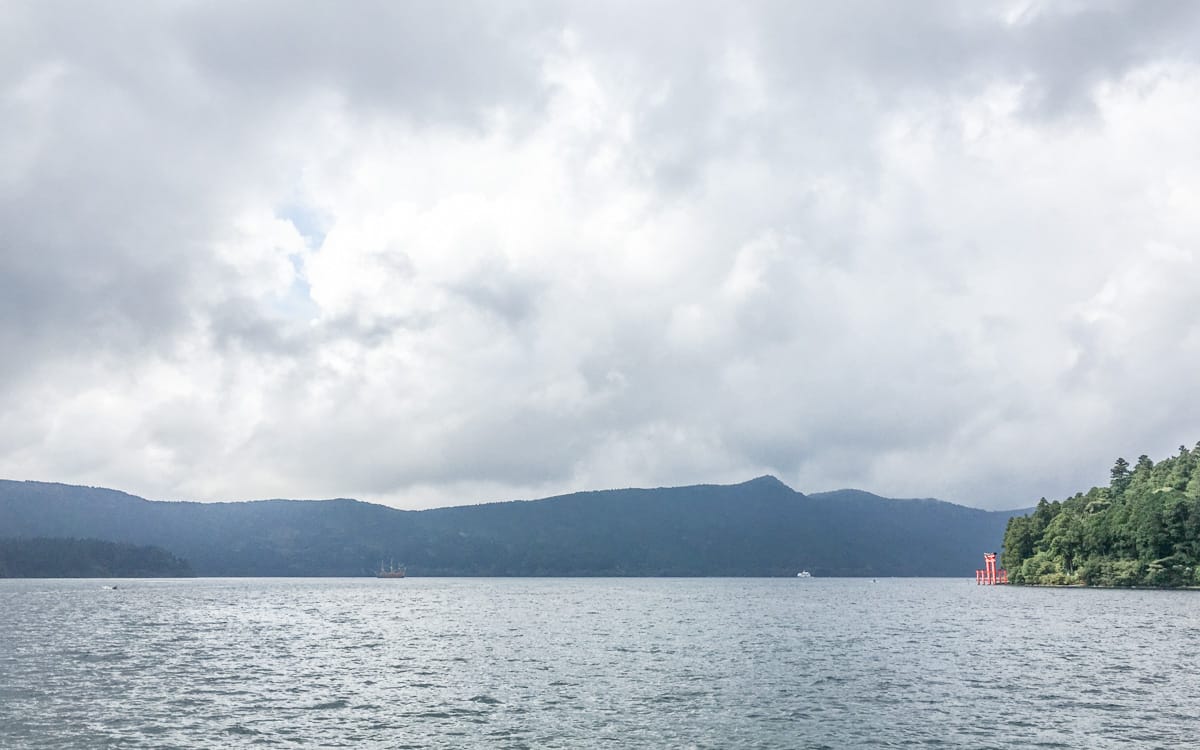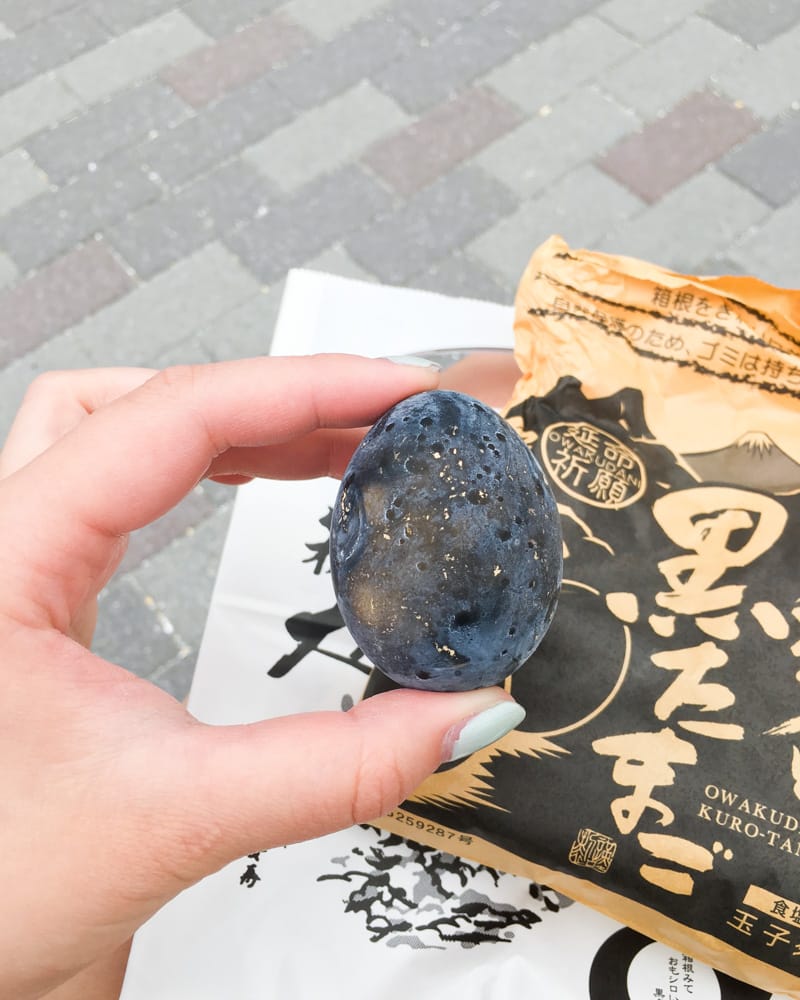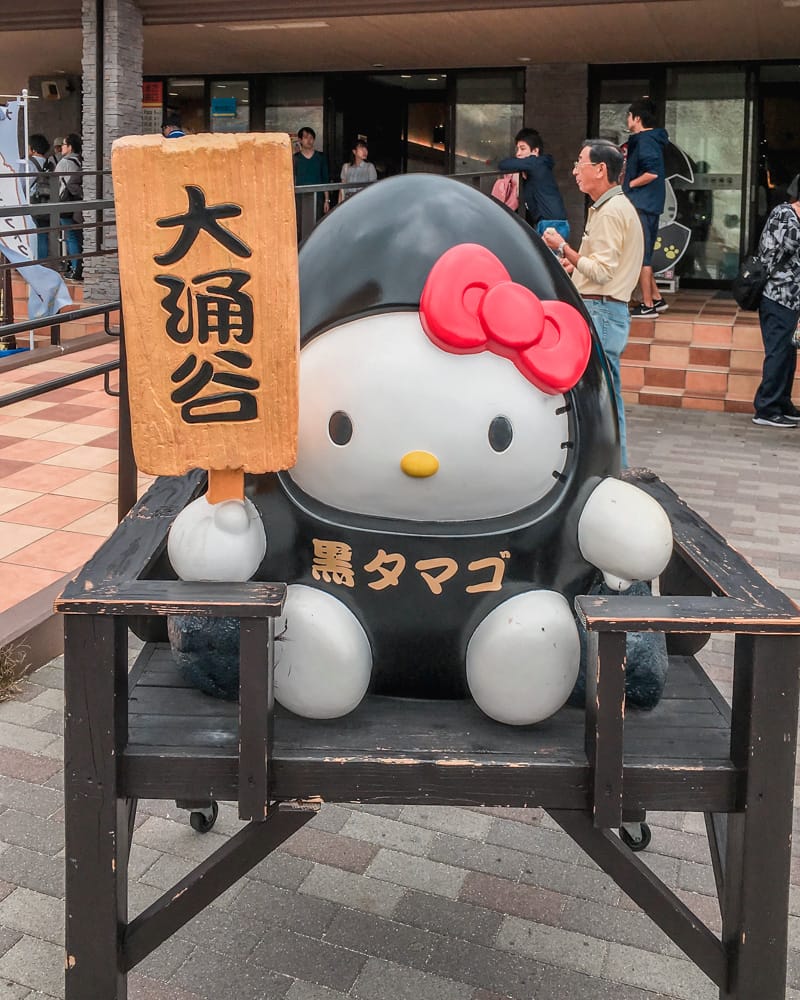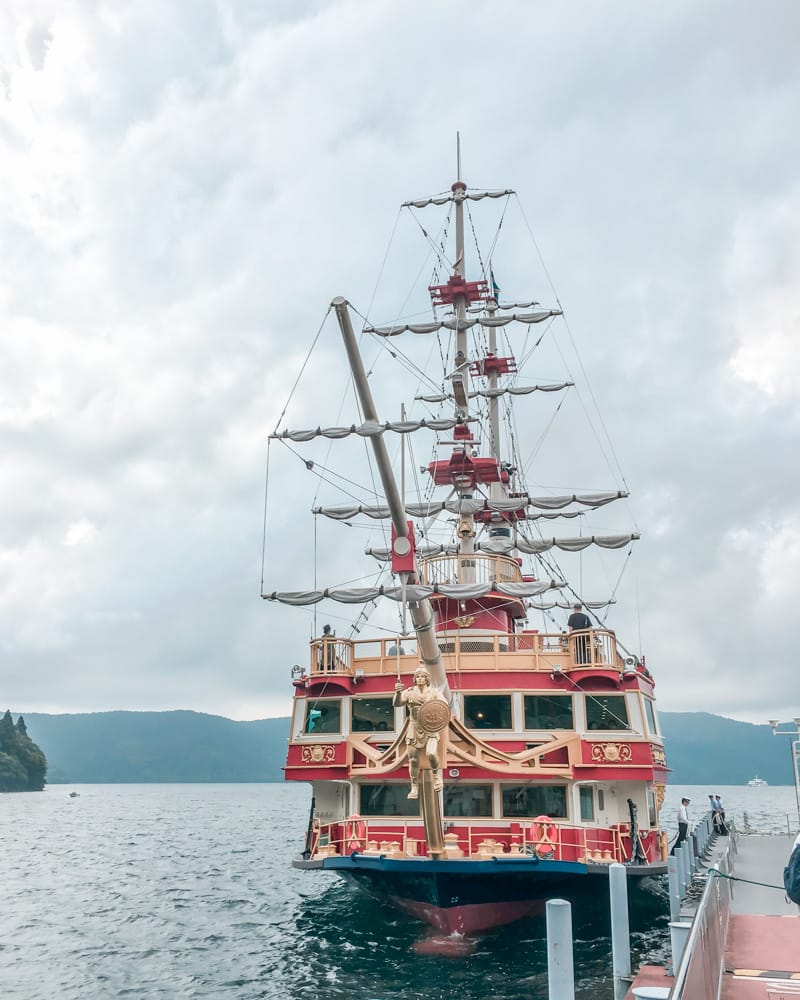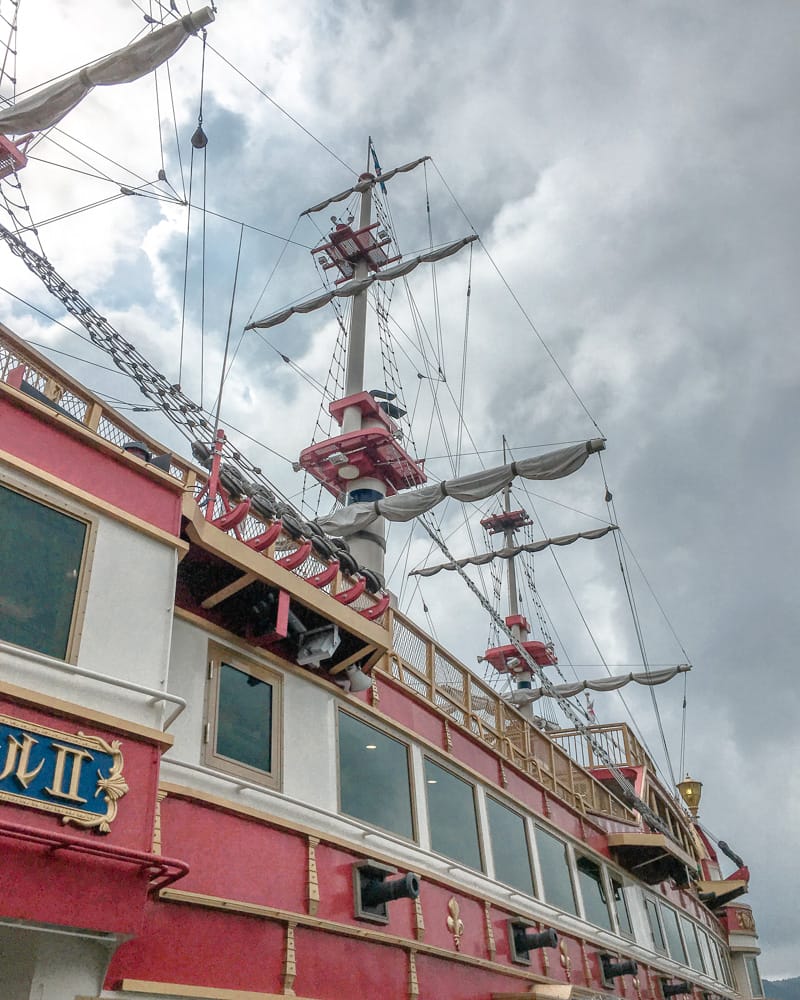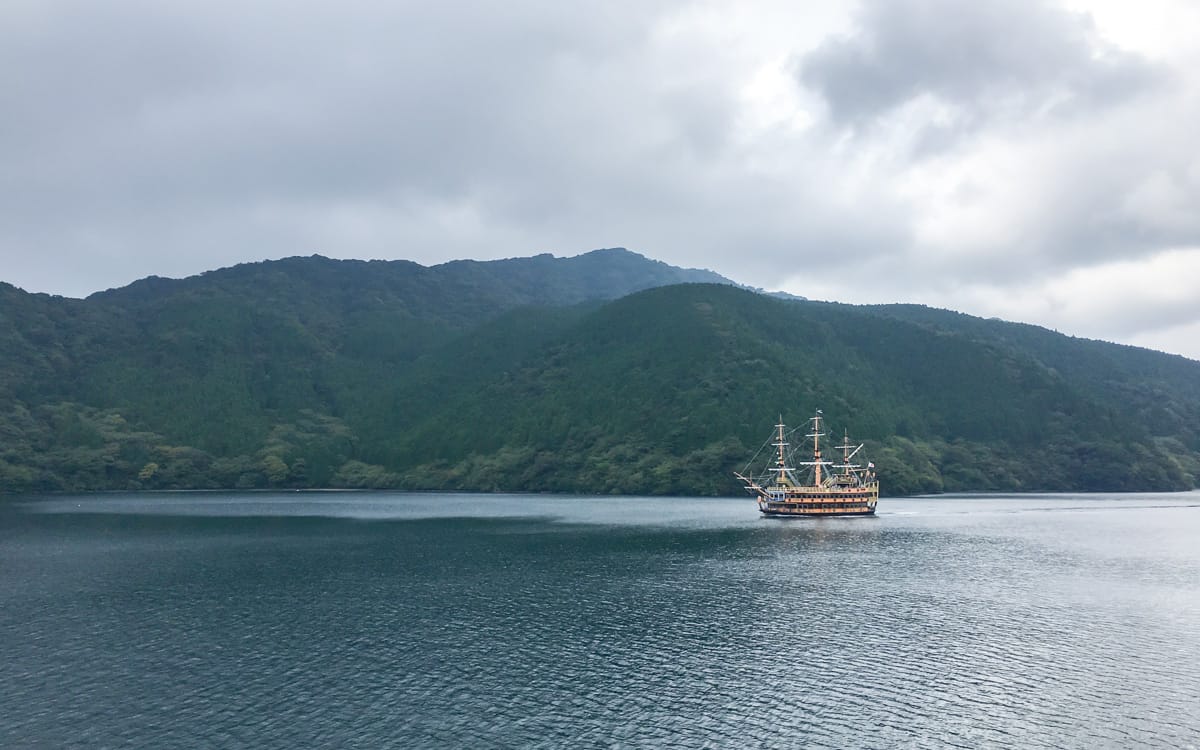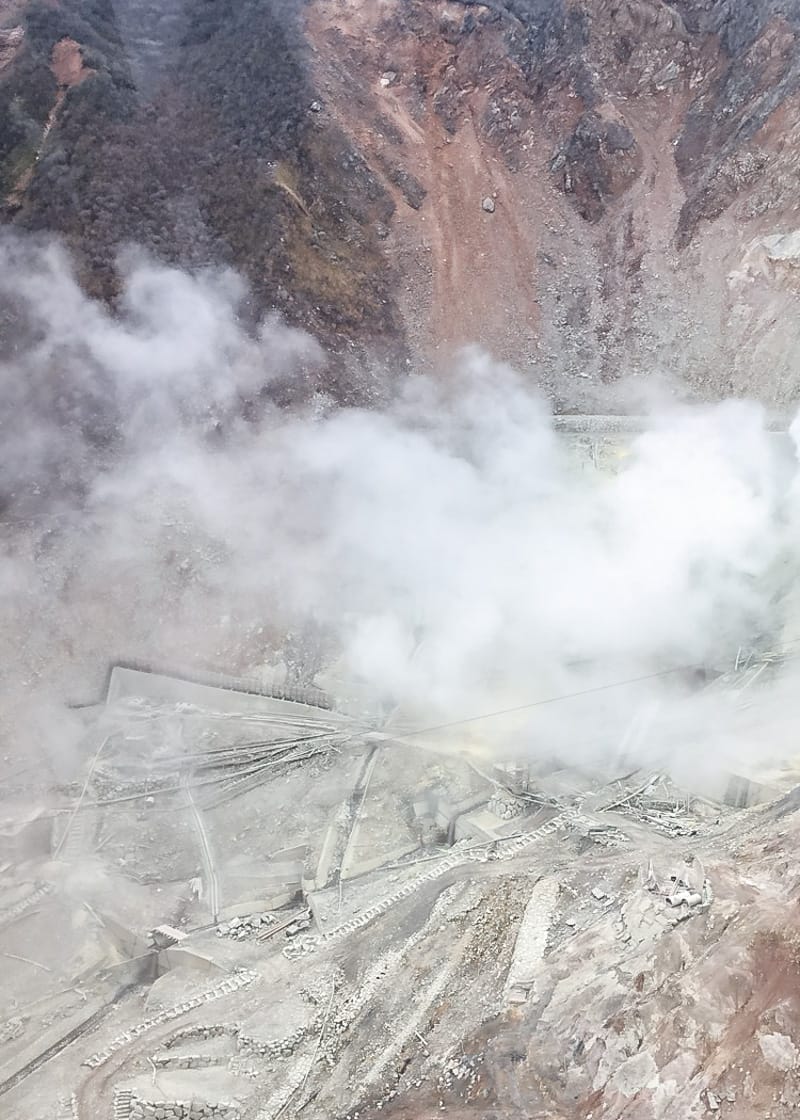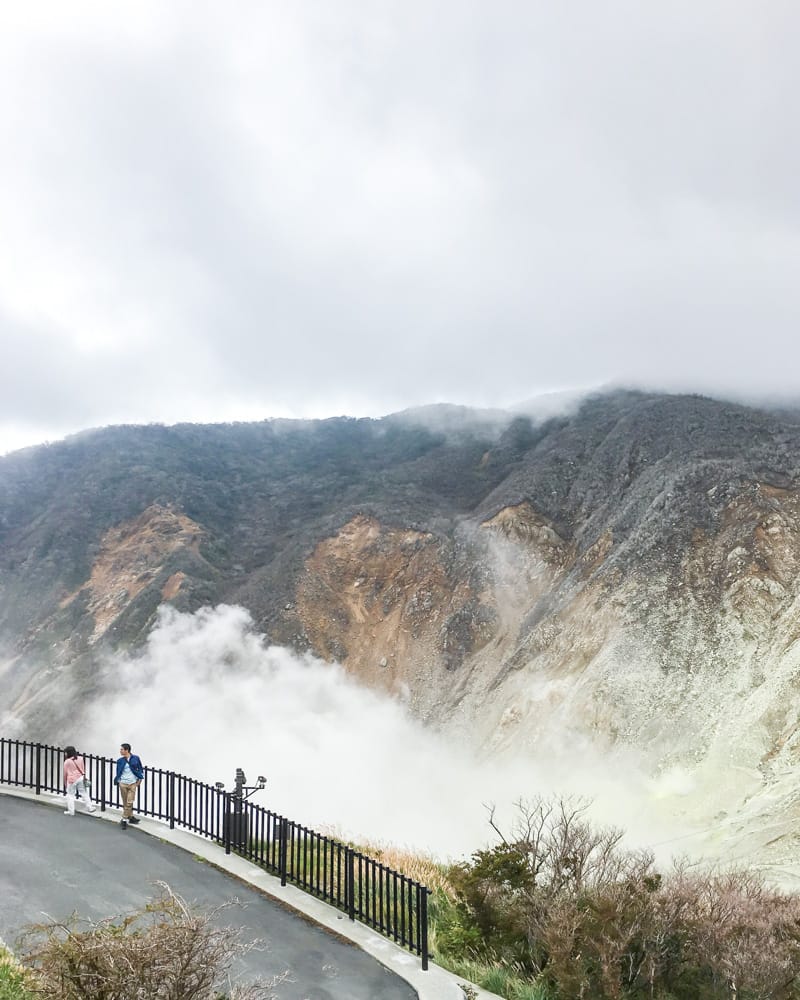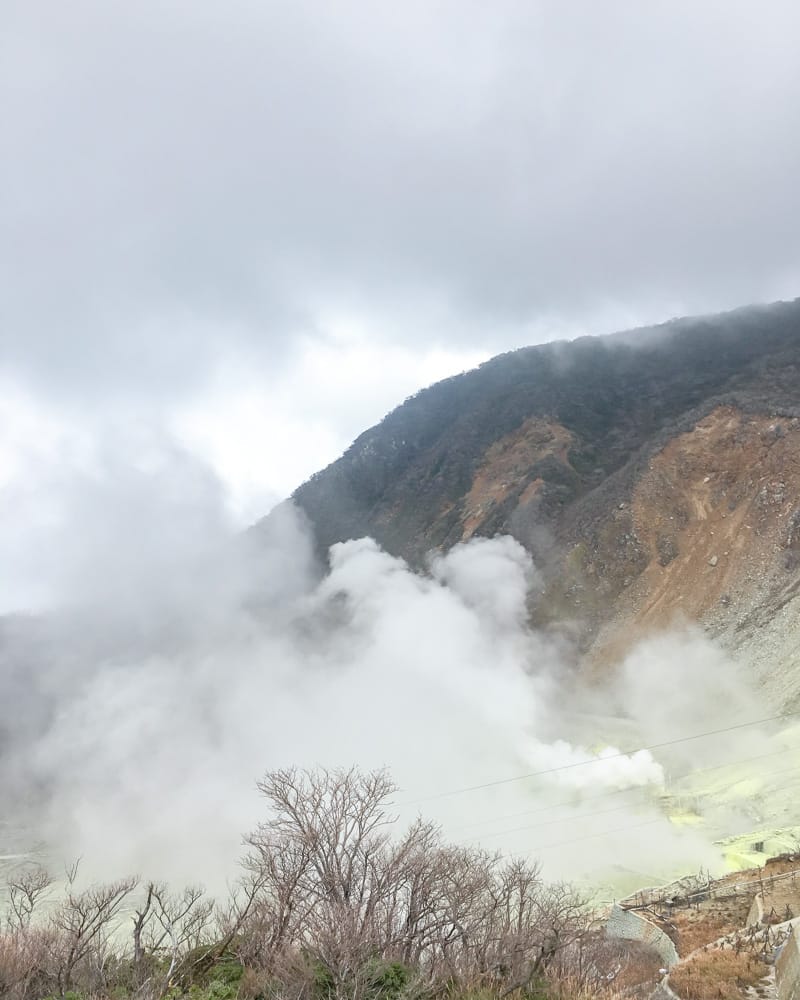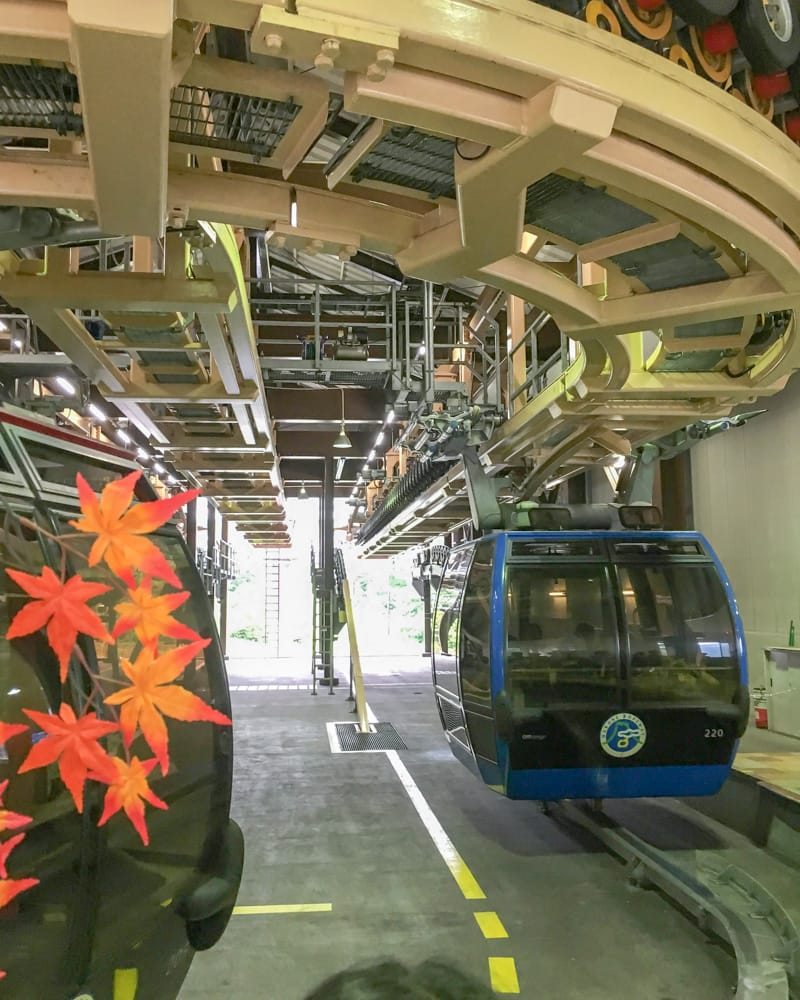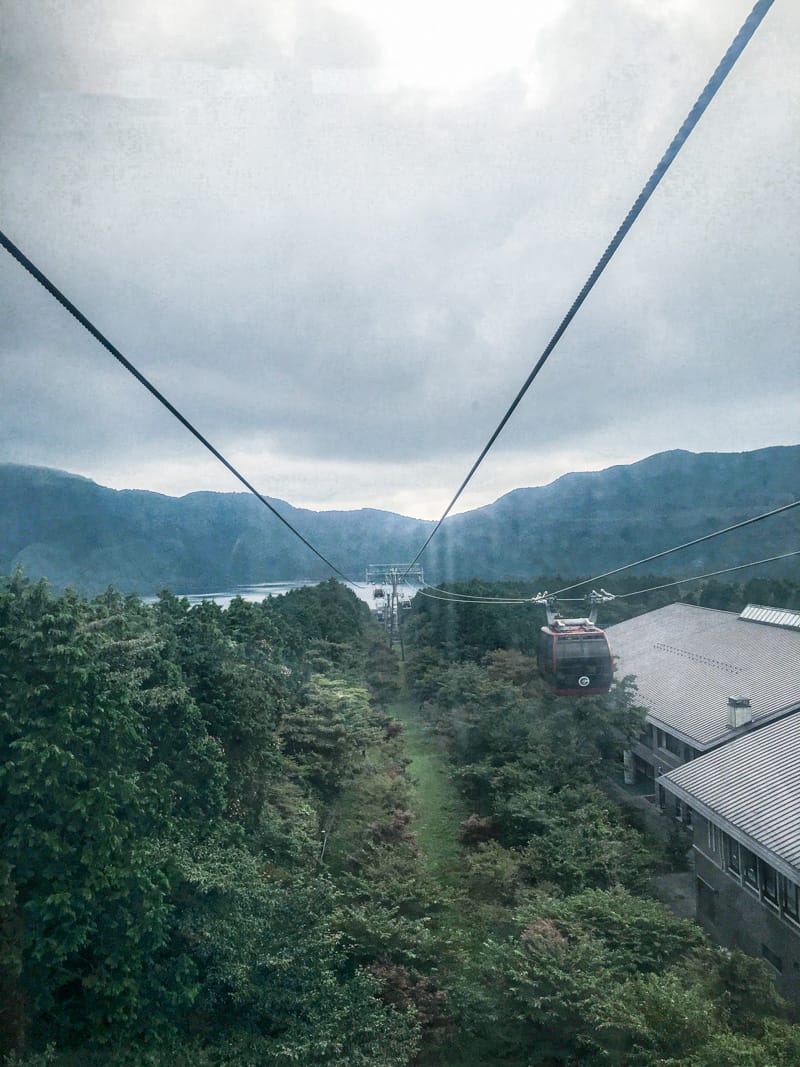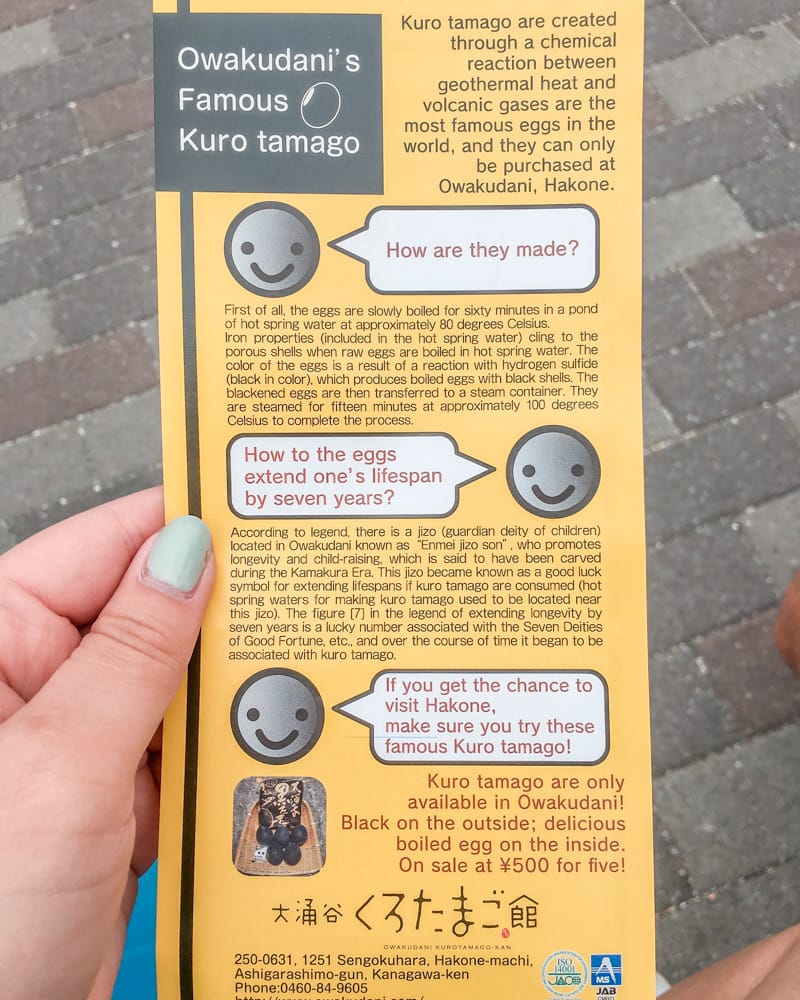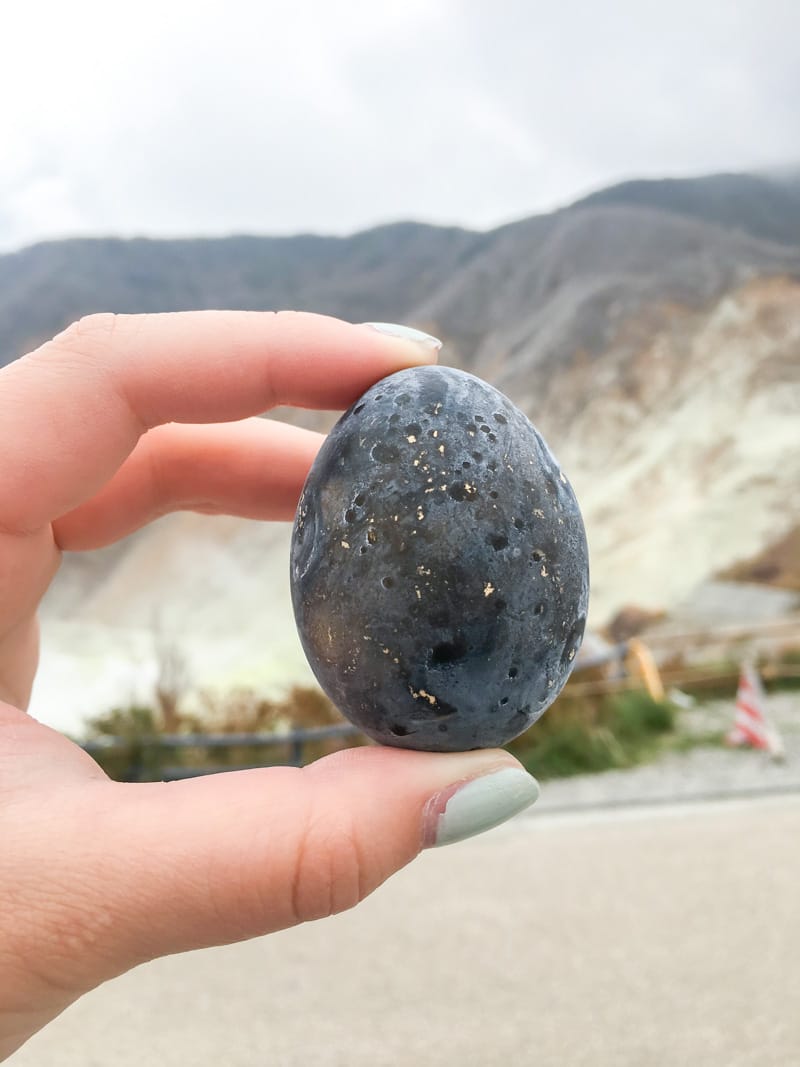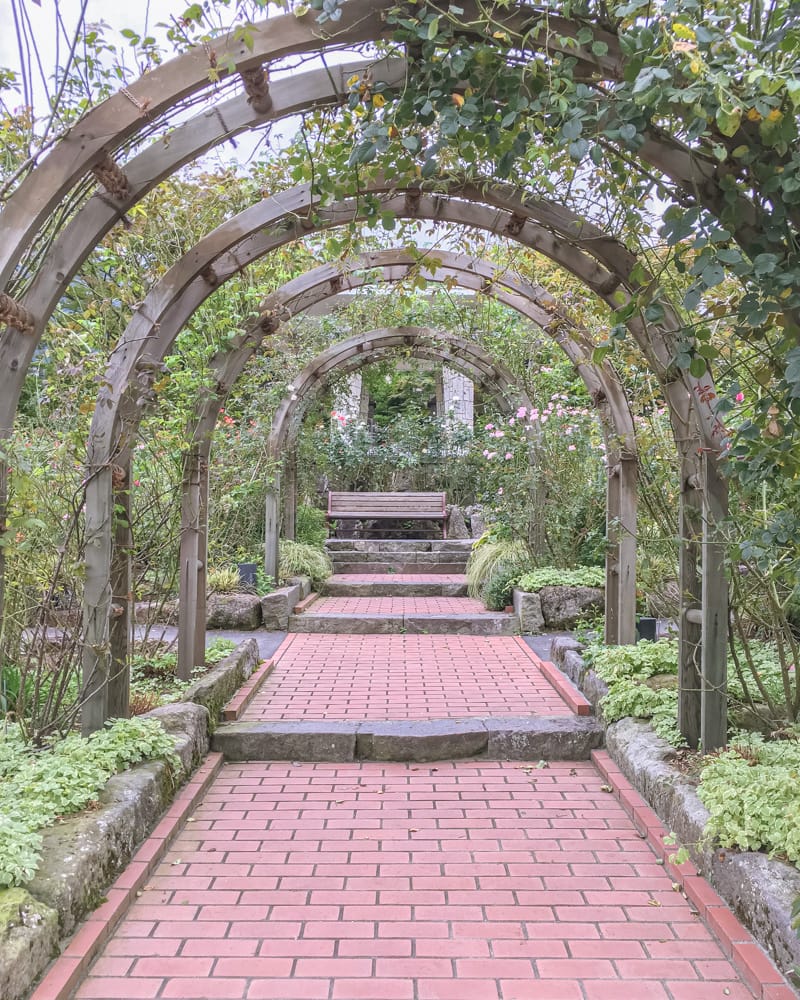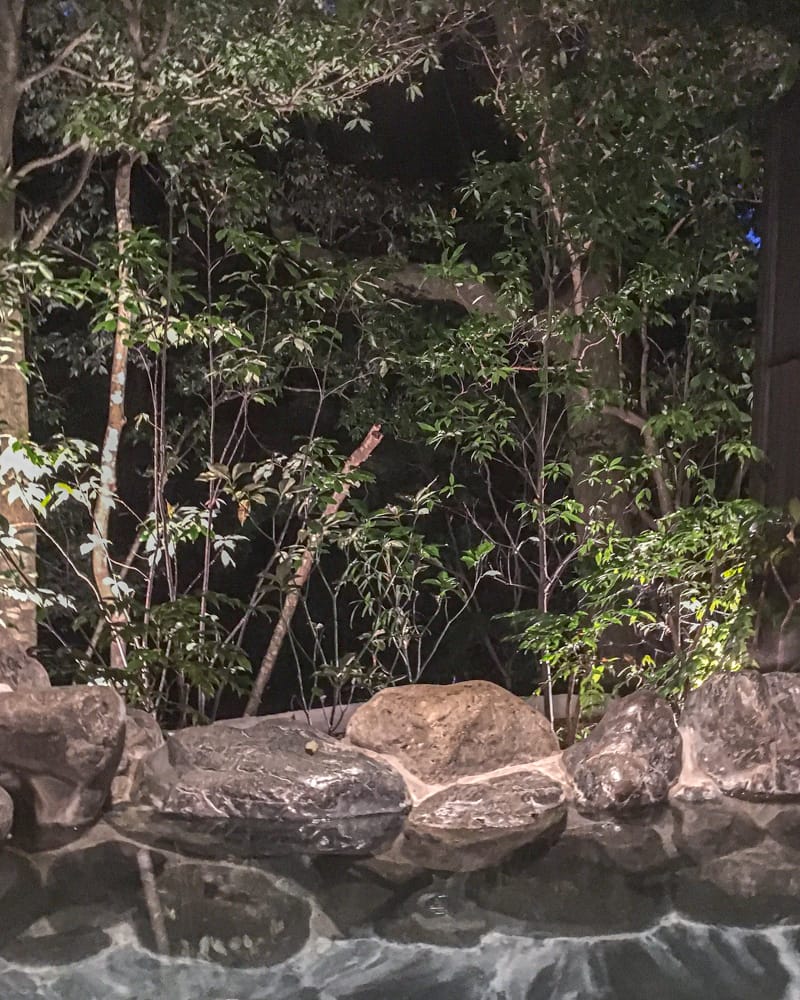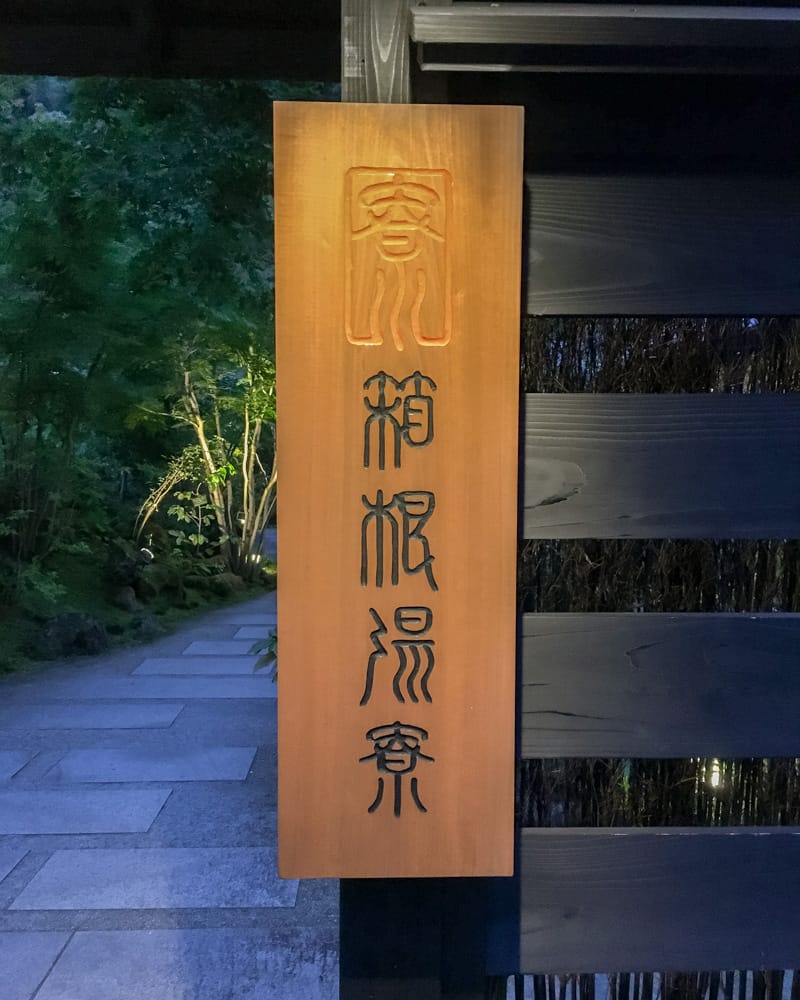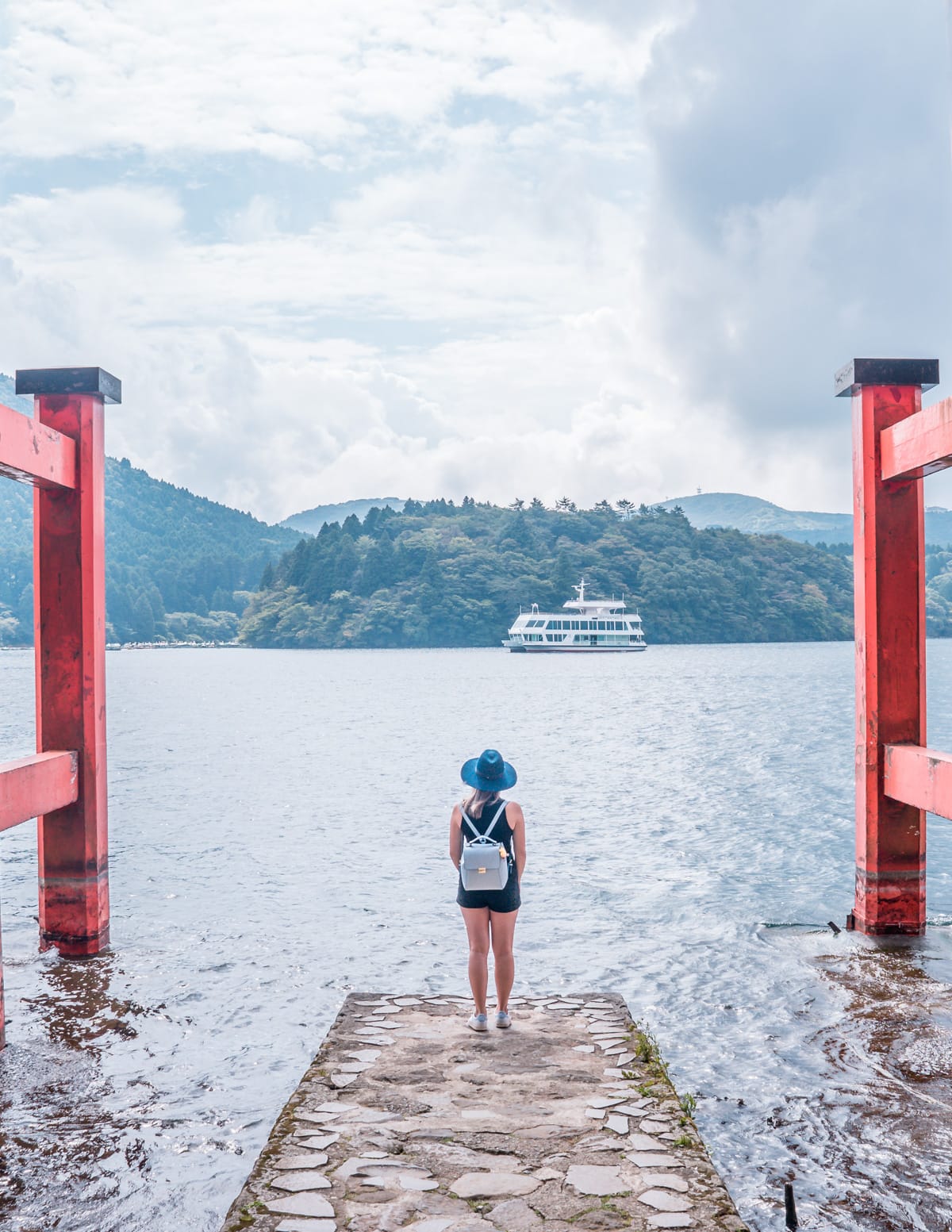
Located in Kanagawa prefecture, Hakone is a volcanic and mountainous area, part of Fuji-Hakone-Izu National Park. It’s famous for its onsens (hot springs) and known for the stunning views of Mt Fuji (on clear days). Filled with hot springs, pirate ships, old trains and volcanic valleys, it’s a perfect day trip from Tokyo.
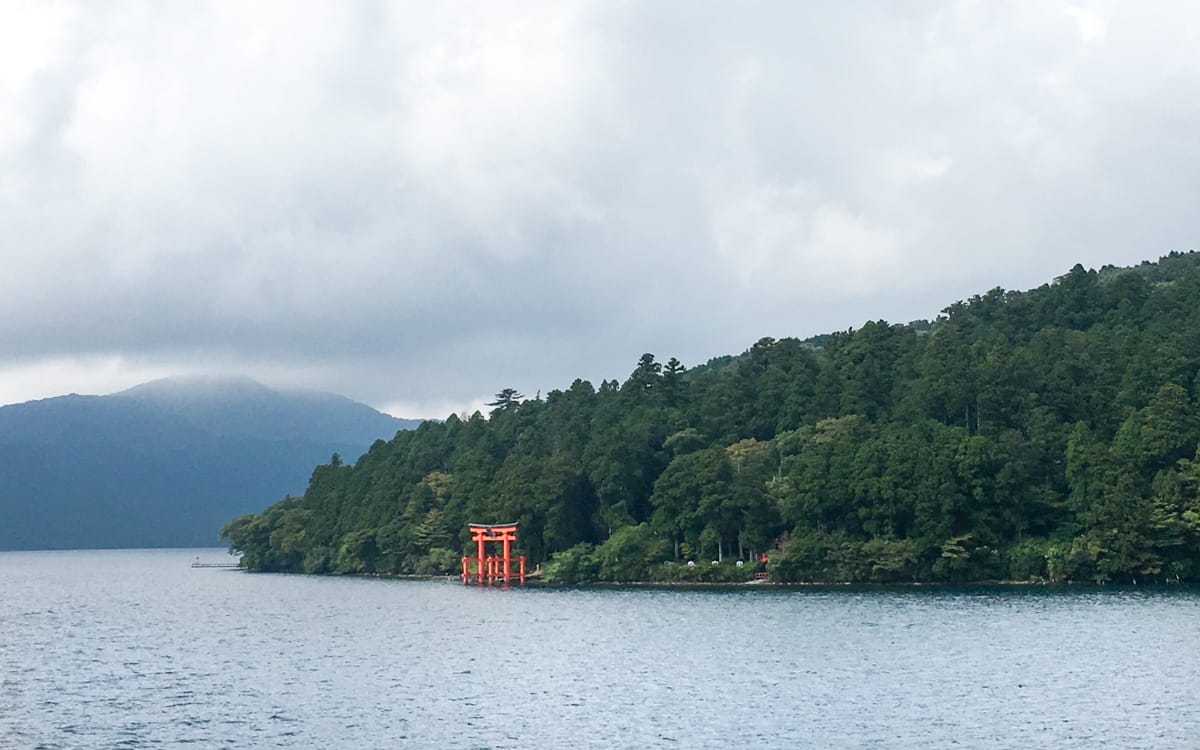
Table of Contents
Visiting Hakone using the Hakone FreePass
Hakone FreePass is a ticket that’s great to cover all your transport to all the key sights in Hakone, also providing discounts to attractions and museums. Despite being called ‘free’, it is a discount pass for either a 2-day pass for ¥5140 and 3-days for ¥5640. The Hakone FreePass covers unlimited rides on all the different types of transport within the Hakone area, including train, cable car, ropeway, boat and bus.
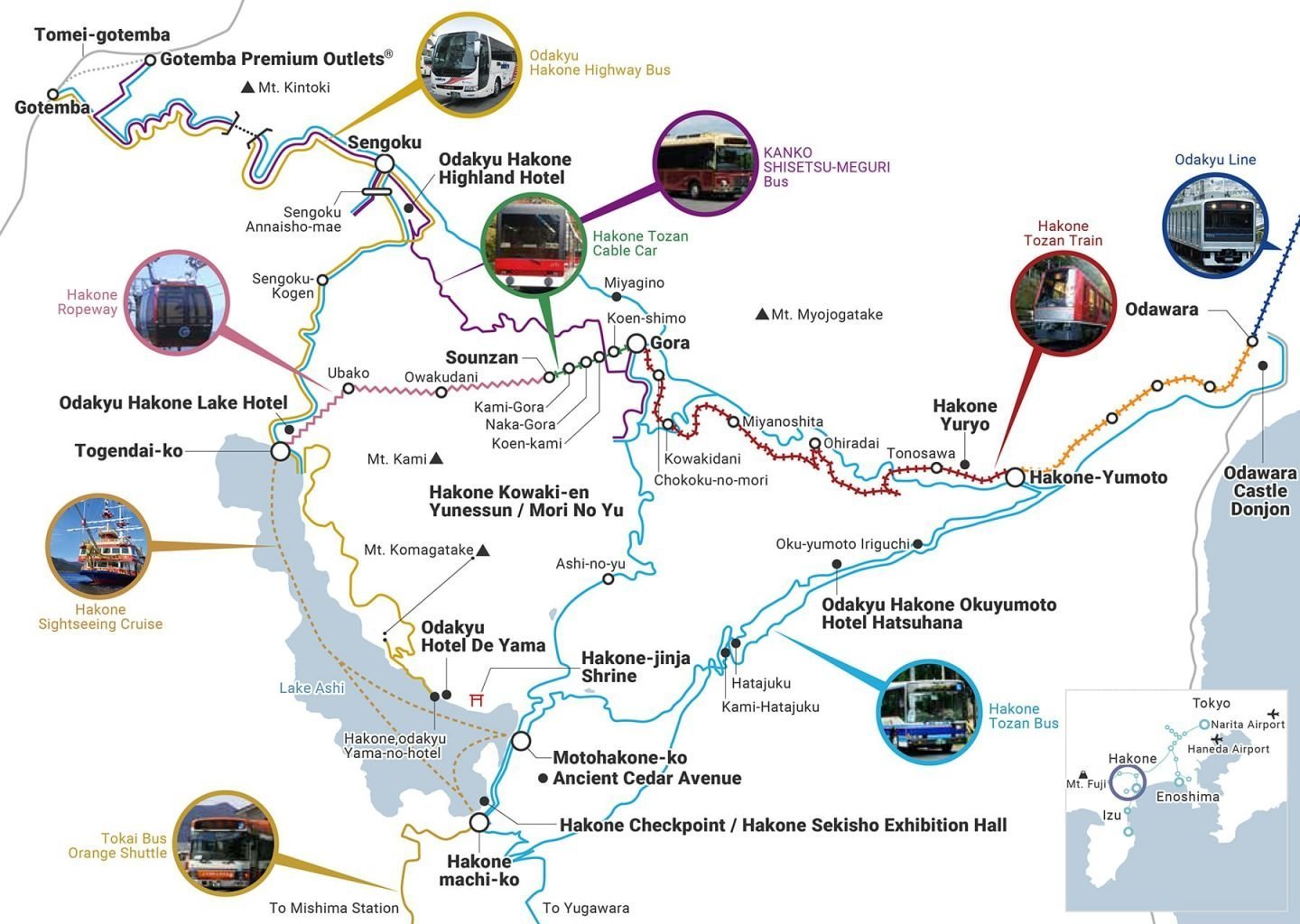
We picked up our pass at the Odakyu Sightseeing Service Centres, which is one of Japan National Tourism Organization-authorized information centres. It is located in Shinjuku West Station, South Exit location. The process was easy, we spoke to an English representative at the counter to purchase our tickets. Since the information centre is only open between 08:00-19:00, we picked up our Hakone FreePass the day before because we were planning to catch the train before 8 am. Alternatively, you can buy the Hakone FreePass online and then pick it up at the information centre.
Note: this information centre is open from 08:00 to 19:00 and they also have representatives that speak in different languages, including Chinese, Thai-, Russian- and Hindi.
Other information centres where you can pick up a free pass includes:
- Odakyu Sightseeing Service Center, Shinjuku South
- Odakyu Sightseeing Service Center, Odawara
- Hakone-Yumoto Tourist Information Center
| Hakone Free Pass | |
| 2 day pass Adults ¥5,700 Child (6 to 11 years old) ¥1,500 | 3 day pass Adults ¥6,100 Child (6 to 11 years old) ¥1,750 |
*All prices are correct at time of post. Please check before going.
Follow our day trip adventures below:
How to get to Hakone from Tokyo
One of the best ways to get to Hakone from Tokyo is to take the Romancecar (Odakyu Limited Express). With the Hakone FreePass, the Romance train costs an additional ¥1090 (one-way).
Tokyo to Hakone by train
→ A) Hakone via Romancecar – Odakyu Limited Express (direct train)
Shinjuku station → Hakone-Yumoto station
Subway takes approx 80 mins
Take the Romancar express train with reserved seating only.
Cost: additional ¥1090 (one-way) on top of the Hakone Free Pass
→ B) Hakone via subway on the Odakyu Line
Shinjuku station → Odawara station → Hakone Tozan train → Hakone Yumoto station
Subway takes approx 115 mins
Take the Odakyu Line Express (100mins) then change to Hakone Tozan Line (15mins).
Cost: included with the Hakone FreePass
→ C) Hakone via JR trains
If you have a JR Pass, you can take the train to Odawara Station on the Tokaido Shinkansen line. From Odawara, take the Hakone Tozan Line mountain train to Hakone.
Get to Hakone by Bus
Take the direct Odakyu Hakone highway bus from Shinjuku station to Laki Ashi takes around 2 hours. A single trip ticket costs around ¥2000.
Getting around Hakone
The Hakone FreePass includes all transport networks in Hakone:
- Hakone Tozan Train
- Hakone Ropeway
- Hakone Tozan Bus
- Tokai Bus Orange Shuttle
- Hakone Tozan Cable Car
- Hakone Sightseeing Cruise
- Odakyu Hakone Highway Bus
- Hakone Tozan Bus/Kanko Shisetsu-Meguri Bus
Is the Hakone FreePass worth it?
We got great value from the 2-day Hakone FreePass even though we were only there for a day. We were able to use it for unlimited rides, which was convenient and saved time rather than buying tickets for each transport. It covered the round trip ticket for the Odakyu Line, which was a bonus (additional cost for the Romancecar).
Now that we know how to get to Hakone, let the adventure begin!
→ More: Kinosaki Onsen: A glimpse into an Onsen town
Things to do in Hakone: One Day Itinerary (Hakone loop)
The most common way to travel around Hakone is by circling around in a counterclockwise direction. We wanted to see the grand Hakone Torii gate before the afternoon crowds. So we decided to loop around Hakone in a clockwise direction. It’s possible to circle around either direction in a day.
If you are staying overnight, you may start and end at a different spot depending on your accommodation.
→ More: Kinosaki Onsen: A glimpse into an Onsen town
Hakone shrine & Torii gate
Our first stop was the iconic Hakone grand Torii gate. I always thought the floating Torii gate was only on Miyajima and was excited to find out there was one here too! Once we arrived, there were already some people there taking photos and after a while, a queue formed. Best to hit this spot early!
To get here, take the Hakone Tozan Bus (30 mins) from Hakone-Yumoto station to Moto-Hakone Bus stop (元箱根) then take a short 10 minute walk to the Torii gate.
If you explore more within the forest, you’ll find the Hakone Shrine.
Sail across Lake Ashi in a pirate ship
At the heart of Hakone is Lake Ashinoki (芦ノ湖), one of the 5 famous lakes in the Fuji-izu region. It was formed after the last volcanic eruption 3000 years ago. The best way to enjoy the lake views is by taking the sightseeing cruises for 30 mins. There are 3 routes departing from Motohakone-ko, Hakonemachi-ko and Togendai-ko.
We boarded the pirate ship and headed up to the windy upper deck. The calm waters presented stunning views, even though it was cloudy. As we cruised along the lake, we spotted the floating Tori gate of the Hakone Shrine, from where we were just taking photos. On clearer days you can spot Mount Fuji.
Hakone Sightseeing BoatBoat piers: Motohakone-ko (closer to Hakone Shrine area) OR Hakonemachi-ko → Togendai-ko
Cost: Included with Hakone Free Pass
One way fares Adult ¥1,000 Child ¥500
Round trip Adult ¥1,840 Child ¥910
Special cabin fare is an additional charge of ¥500 for adults and ¥250 for children for the above fare.
Time: 30 minutes (duration), departures every 30-60 minutes
Important note: May 19, 2019
Due to an increased possibility of a volcanic eruption, a no-entry zone is currently maintained around the Owakudani area. As a result, the Hakone Ropeway is out of service, and the Owakudani area cannot be visited. Substitute buses operate between Sounzan and Togendai. The other areas of Hakone are not affected.
Owakudani (大湧谷) — Valley of Hell
After the cruise across Lake Ashinoko, we took the cable car to the top of the mountain to Owakudani. The natural beauty of Owakudani is the volcanic valley, known as the ‘Valley of Hell’, which formed during the last volcanic eruption which was about 3000 years ago. It’s an active volcanic valley with rising volcanic gases and active sulphur vents.
→ More: Overnight temple stay at Mt Koyasan
Hakone Ropeway
How to get there: Togendai-ko → Owakudani or Souzan station
Opening hours: 9am – 4pm (hours of operation may vary)
Cost: Included with the Hakone FreePass
Time: approx 30 mins
Black eggs of Owakudani
At the top of Owakudani, we tried the local specialty of black eggs called the Kuro-Tamago. These eggs have been boiled in the hot spring pond in Owakudani. It’s cooked in natural spring water for 60 minutes at a high temperature of 80 degrees. The eggs are then steamed for 15 minutes at 100 degrees in steel baskets. The shell turns black from the reaction with hydrogen sulphide in the water and iron particles adhering to the eggshell. Despite having a black eggshell, it tastes like a boiled egg. It is believed to add years to your life – legend has it, eating one will add 7 years to your life.
A bag of 5 Kuro-Tamago black eggs costs ¥500.
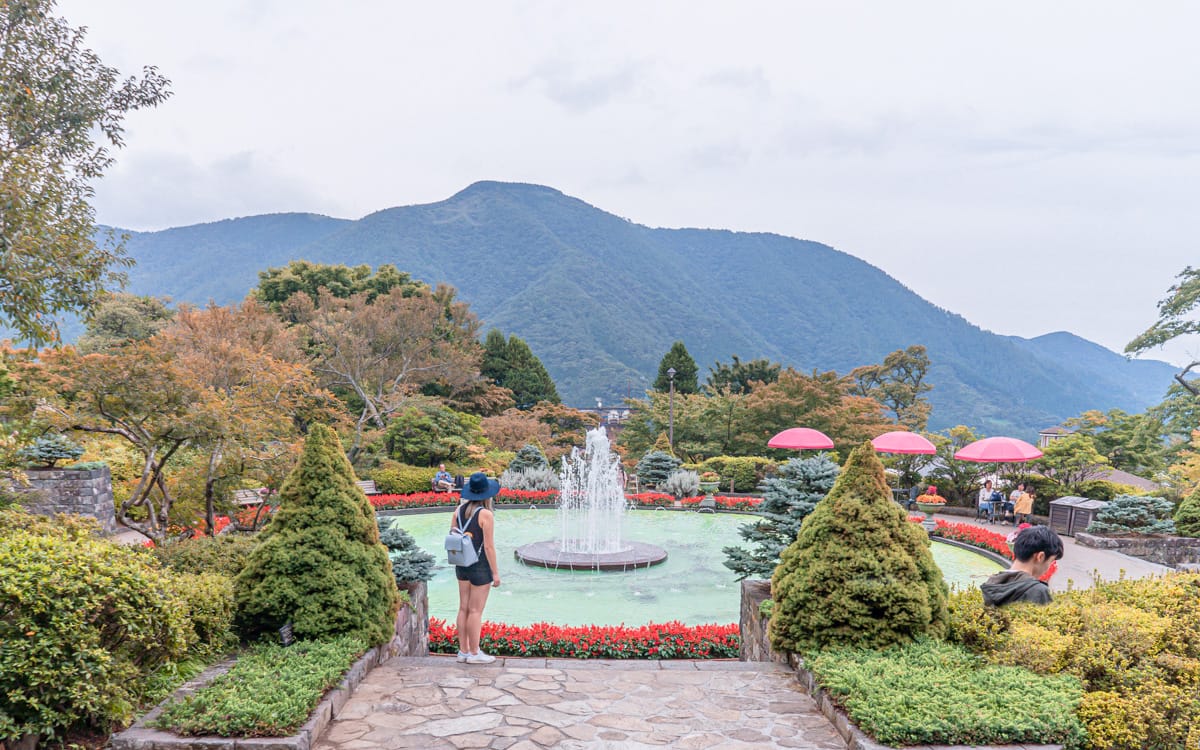
Gora Park
Next, we travelled on the Hakone Tozan Railway to Gora. We visited Japan’s oldest formal French garden that has been opened for over 100 years. It’s apparently lovely during all seasons with various types of flowers blossoming and light displays during summer and Christmas. Entrance to Hakone Gora park is included with the Hakone FreePass.
Hakone Tozan Cablecar
How to get there: Sounzan to Gora
Cost: Included with Hakone FreePass
Time: 10 minutes, departures every 20 minutes
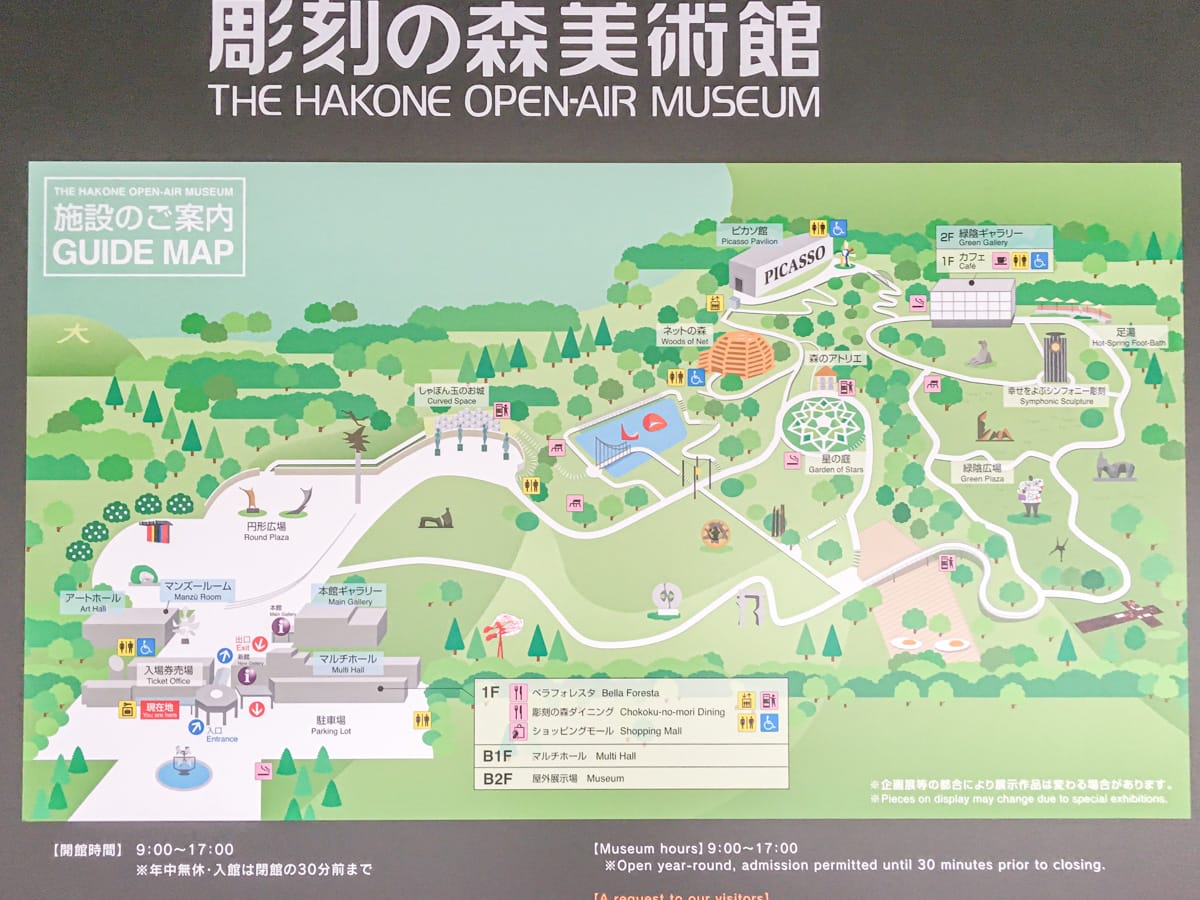
Art in Hakone
Closeby, we tried to visit the Hakone Open Air Museum in Gora. We made it before if the last entrance (4:30pm) but that meant there was only left 30 minutes before it closed. There was only so much we could fit in one day, so we decided to skip it. I’ll definitely be visiting next time.
Hakone Open Air Museum is Japan’s first open-air museum with both indoors and outdoors sculptures. I was very interested to see the Picasso Pavilion exhibit. It exhibitions the world’s best collection of Picasso’s works. Other artworks in pieces by Picasso, Henry Moore, Taro Okamoto, Yasuo Mizui, and more.
Hakone Open Air Museum
Where: 1121 Ninotaira, Hakone-machi, Ashigarashimo-gun 250-0493, Kanagawa Prefecture
Open: 9am to 5pm (last entrance 4:30 pm)
Cost: 1600 yen (1400 with Hakone FreePass)
Hakone is home to many kinds of art, includes:
- Pola Museum of Art
- Lalique Museum, Hakone
- Hakone Venetian Glass Museum
- The Hakone Open Air Museum
- Museum of the Little Prince and Saint-Exupery
- Narukawa Art Museum
*Some provide a discount with the Hakone FreePass
Hakone Tozan Train
From Gora, we needed to head back the Hakone-Yumto Station for our onsen booking. The Hakone Tozan Train zigzags through the mountain and takes around 40 mins to Hakone-Yumto Station. During the ride, there are switchbacks when the driver and conductor change shifts. This means the train the reverses and switches directions.
Hakone Tozan Train
How to get there: Gora to Hakone-Yumoto Station
Cost: Included with the Hakone FreePass
Time: 35 minutes, departures every 10-20 minutes
Hakone Onsen
Hakone is a popular place for onsens, so we couldn’t leave without trying one, of course! After a full day of exploring Hakone, it was finally time to relax.
We booked a private Onsen at Hakone Yuryo. To get there we took the free shuttle bus from Hakone-Yumto Station. It runs every 15 minutes from 9am to 80pm on weekdays and is a short 3 minute ride to Hakone Yuryo. There are large communal baths called ‘Honden Yurakuan Oyu’, costs ¥1,500 for Adults. It also offers 19 private open-air onsen baths called ‘Hanare Yuya Kaden’. It costs ¥3,900-¥56300 per hour for a private onsen.
Surrounded by the open-air views of the green forest, we relaxed in one of the private onsens. It was a well decorated room with a table and chairs to relax. The alkaline mineral-rich hot spring water smoothes the skin.
Make sure to book in advance if you can!
→ More: Kinosaki Onsen: A glimpse into an Onsen town
